Written by Millie Mannering
*This blog was written July 2021 when I first began my scholarship journey before deferment due to Covid-19 *
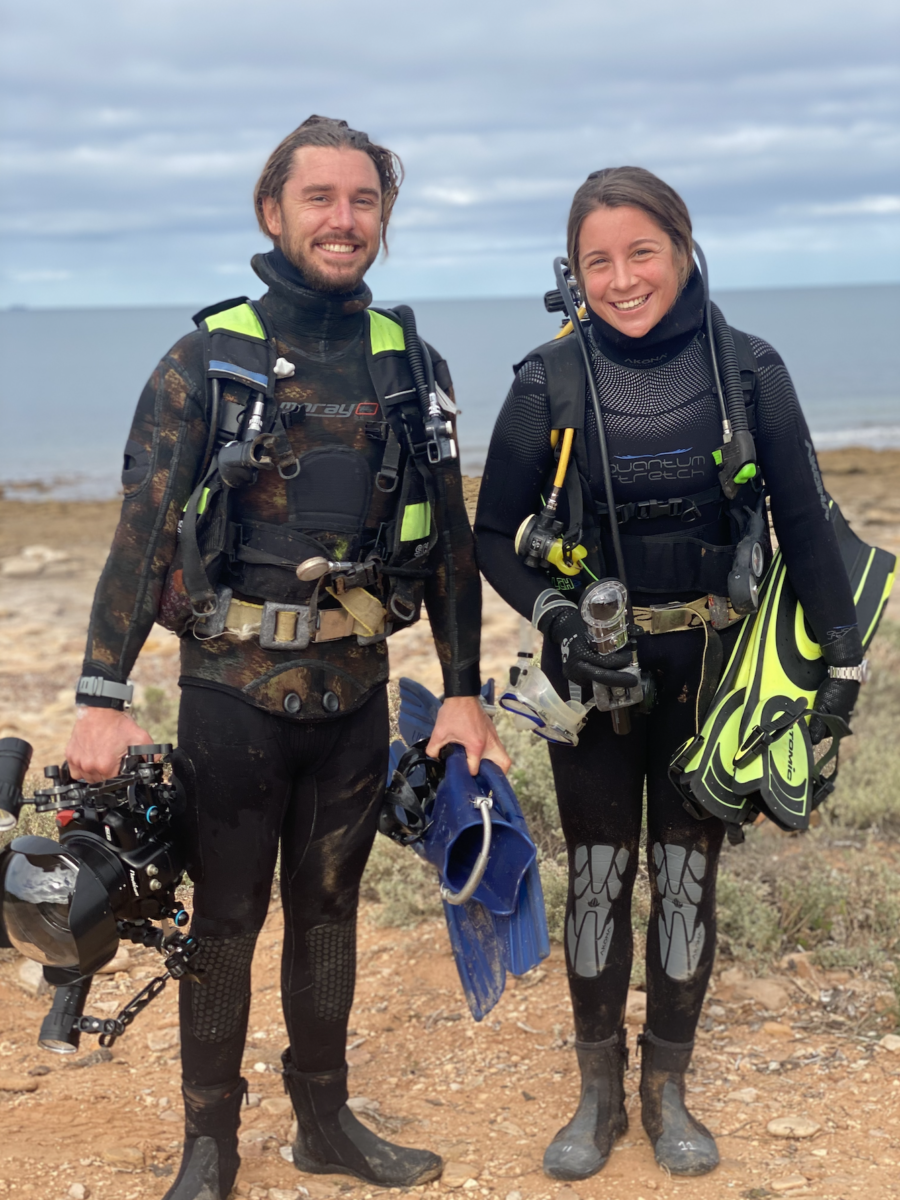
They say that good things take time and after 15 months of waiting, I was extremely excited to begin my year as the Australasian OWUSS Scholar! As you can imagine, my grin was rather enormous when I finally entered Australia.
I flew into Adelaide to meet my co-ordinator Stefan Andrews, an underwater videographer at Ocean Imaging who had recently finished a documentary shoot featuring the iconic giant Australian cuttlefish (Sepia apama). To my delight, we headed across the red-dirt, open countryside of South Australia, down the coast to the aggregation site near Whyalla to check them out.
Stefan and I ready for cuttlefish action! Photo: Hillarey Jones
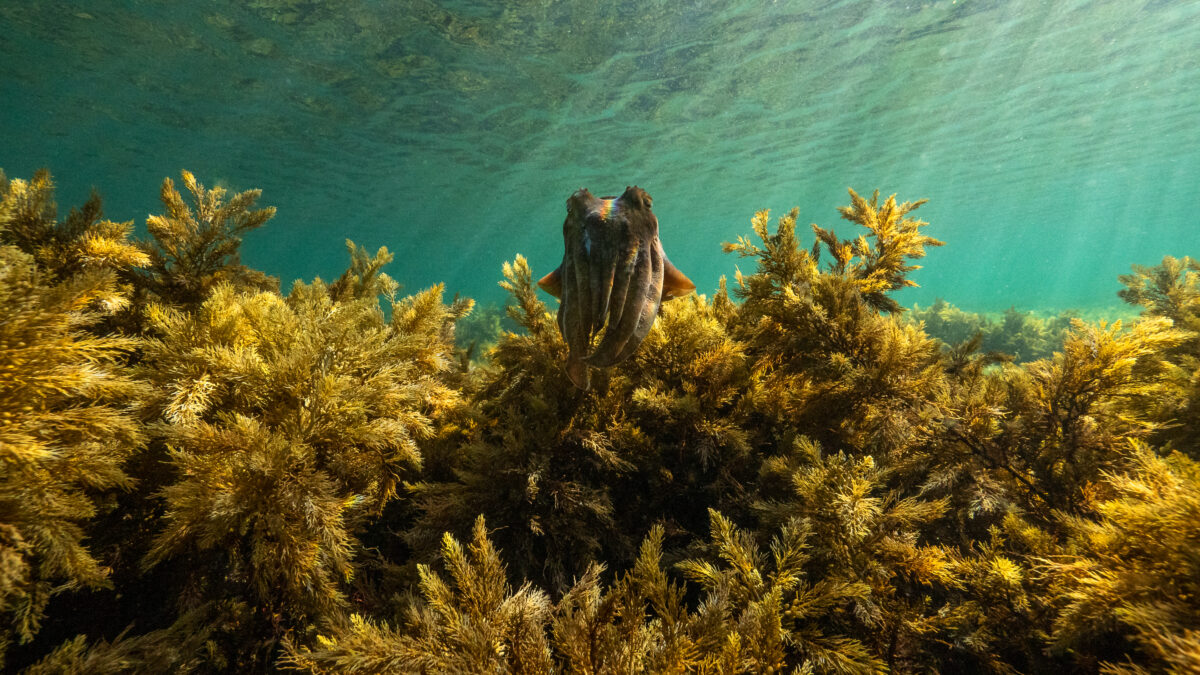
Australian giant cuttlefish can reach can grow up to 10kg. Incredibly alien-like, this individual floated around me while flashing an impressive light display! Photo: Millie Mannering
Only found in Australia, the giant cuttlefish are marine molluscs from the class Cephalopoda. Although they are relatives of octopus and squid, they are unique due to their internal shells that allow buoyancy control (called cuttlebones). The only known spawning aggregation of giant cuttlefish occurs on the rocky reefs of South Australia, where thousands of cuttlefish mate and lay eggs under rocky overhangs and caves. Cuttlefish were commercially fished in Australia due to their use as fish bait. However, initiated by the local diving community, people fought to protect the Whyalla aggregation site from fisheries and established a permanent exclusion zone. Now, every spawning season, tourists flock from around the world to witness this incredible natural phenomenon.
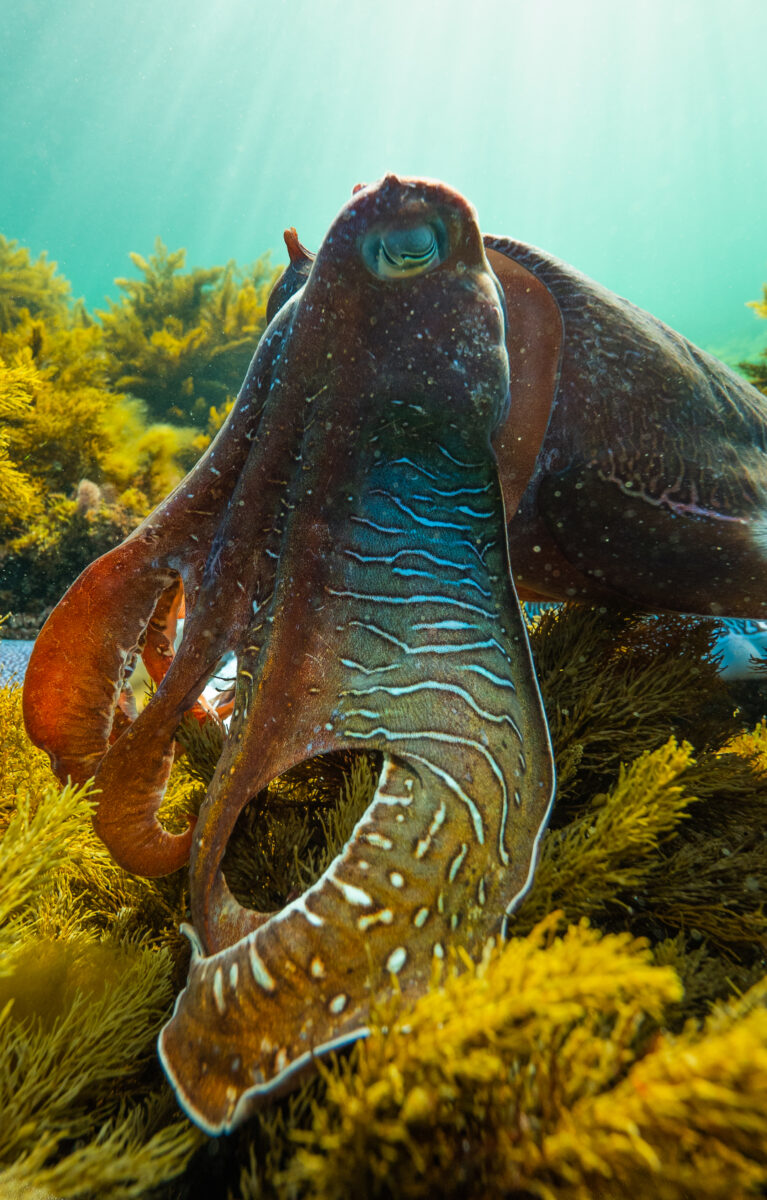
After Stefan and I kitted up in dive gear, we splashed under the surface and were immediately surrounded by floating cuttlefish. Slowly inching closer to one large individual, I noticed streaks of dark rippling across its body. I couldn’t believe my eyes – the cuttlefish was flashing psychedelic colour patterns like a TV screen! Cuttlefish use these colour displays across their mantle for both communication and camouflage, primarily controlled through neuromuscular organs called chromatophores1.
I watched as cuttlefish turned completely white while flying across the sand and morphed into shades of brown to hide amongst the seaweed – all within seconds!
Photo: Millie Mannering
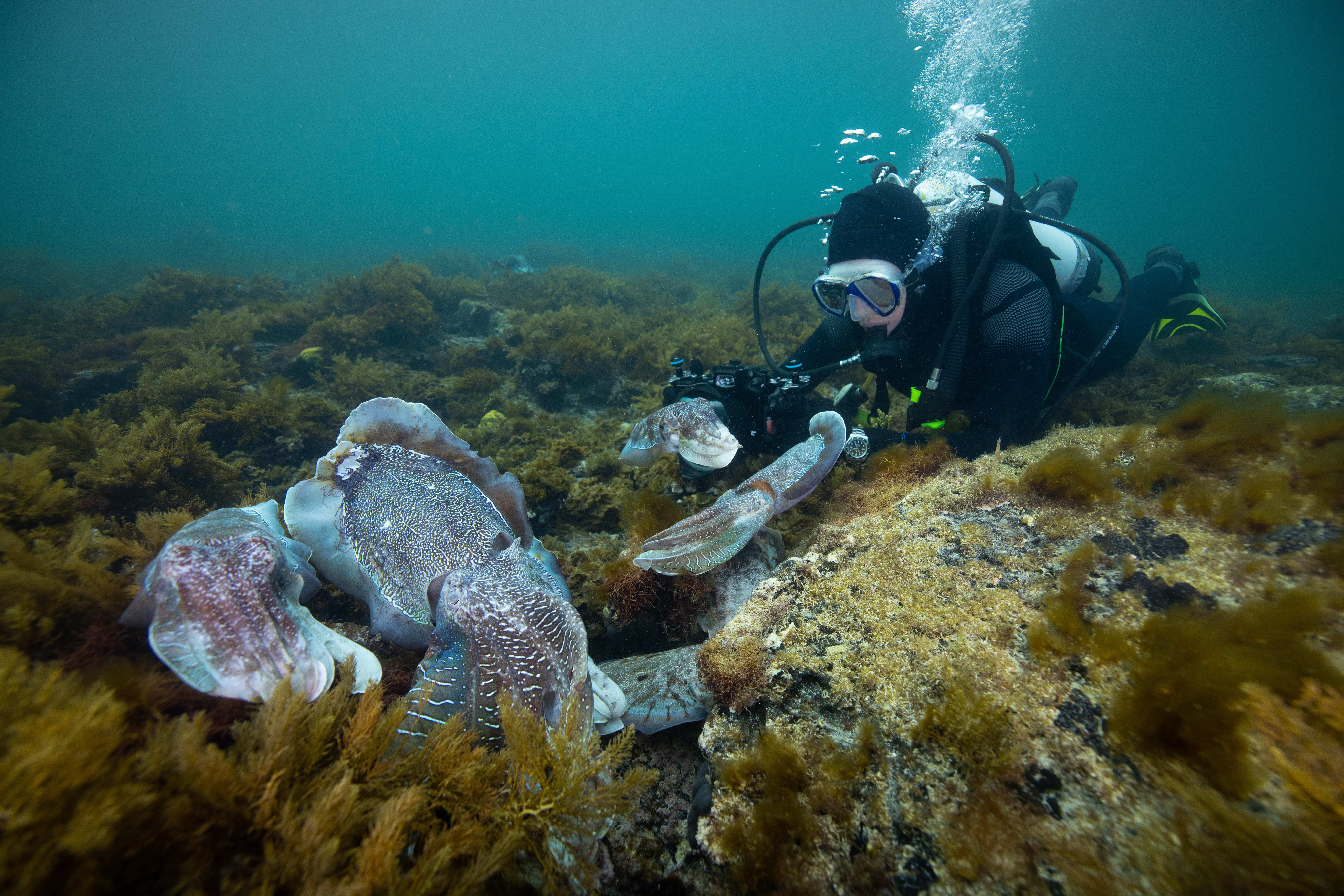
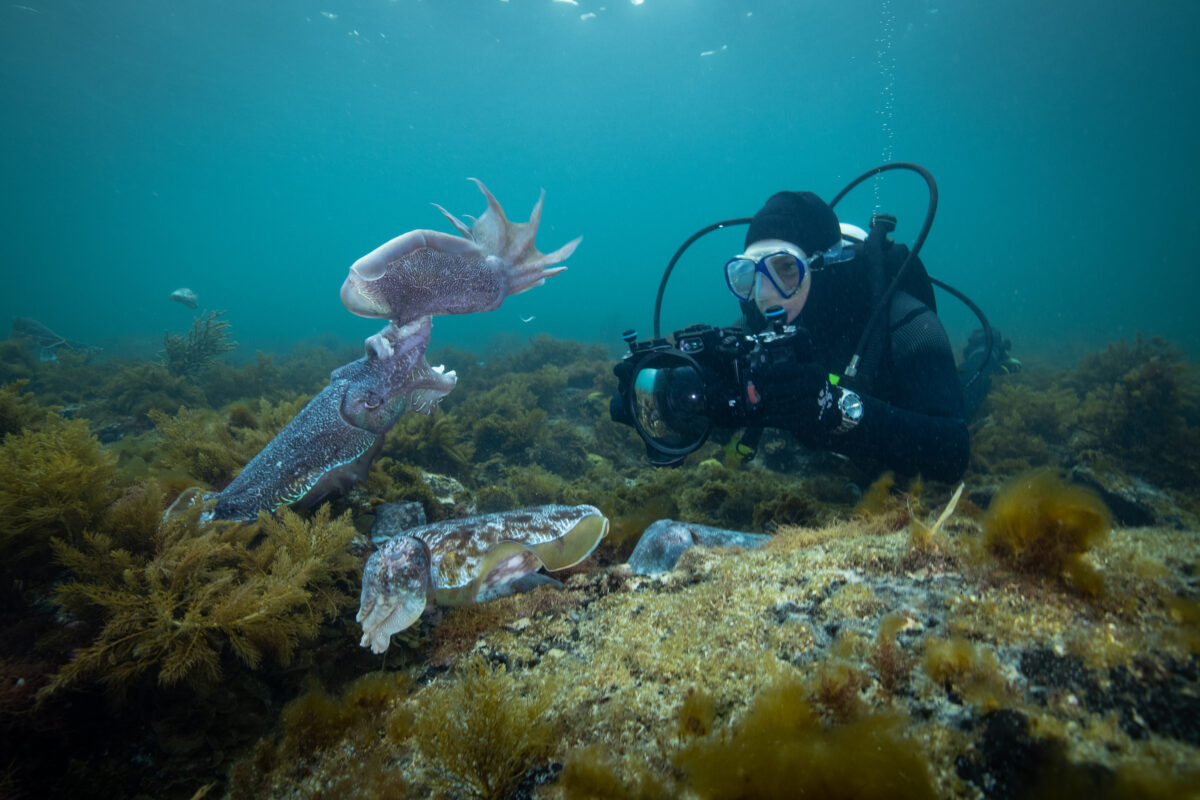
Watching the complex behaviour of cuttlefish entertained me for hours. Sometimes I couldn’t stop myself laughing at the crazy scene. Photo: Stefan Andrews
Sneaky Males!
With a background in behavioural ecology, I found it fascinating to examine the complexity of cuttlefish interactions in real life. There is intense male-male competition for females to mate with at the aggregation site. Males use colours and the ability to stretch themselves out to impress females by their magnificence and size. Smaller male cuttlefish will be outcompeted by their larger, dazzling counterparts and will be unable to fight for a female to mate with… BUT they have developed their own fascinating reproductive strategy.
‘Sneaker’ males can mimic the female colouration as a disguise to foil guarding attempts of dominant males and get close to a female2. Once the dominant male is distracted fighting off his competitors, the smaller and veerryy sneaky male drops his disguise and takes the opportunity to mate with the female.
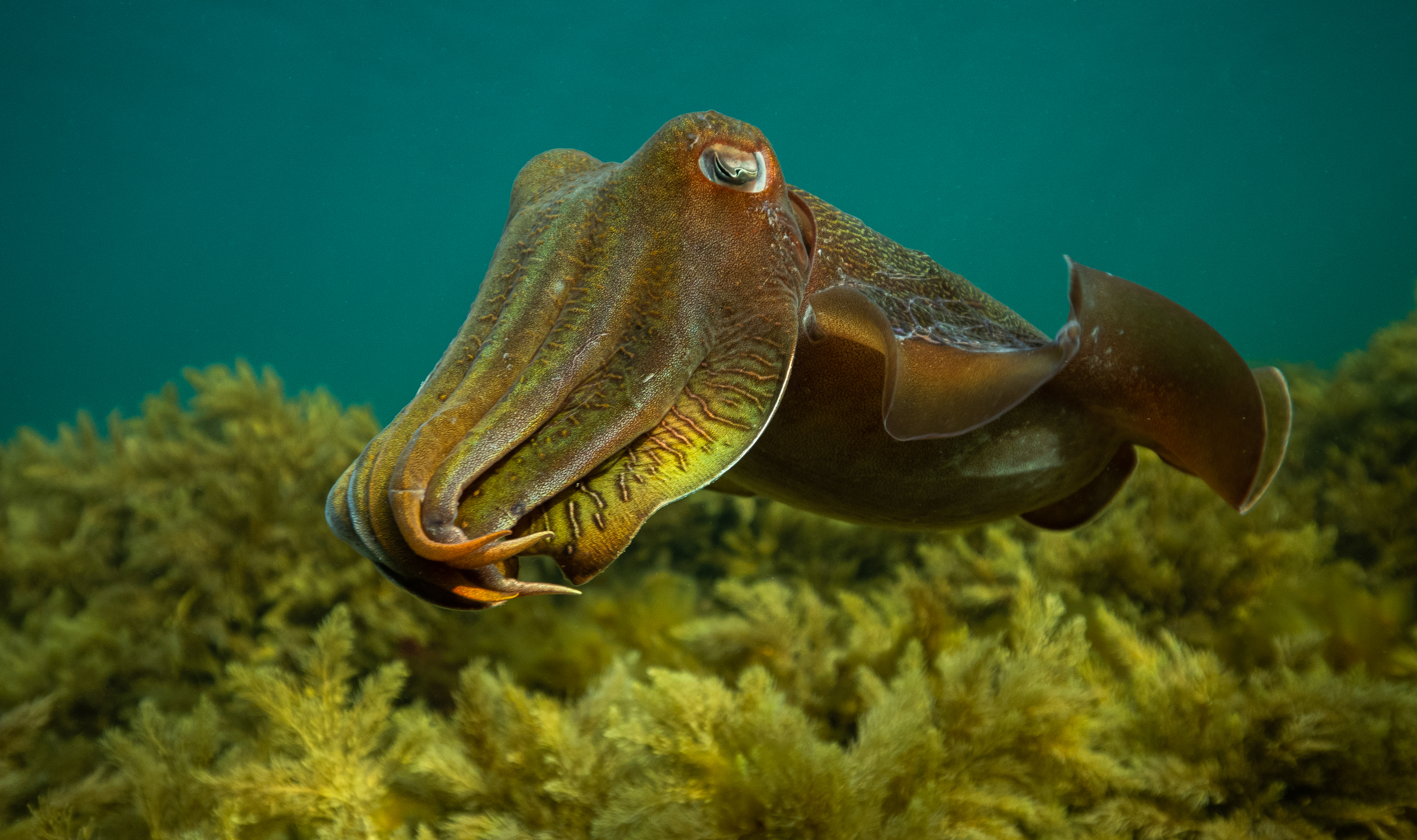
Experience what diving amongst a swarm of cuttlefish is like and watch some of the exciting 360 footage we took here!
Not only are cuttlefish capable of advanced colour camouflage, they can also physically manipulate themselves to look like seaweed!? Controlling muscle bundles called papillae, allows cuttlefish to change their surface texture from silky smooth to rough and covered with weed-like extensions.
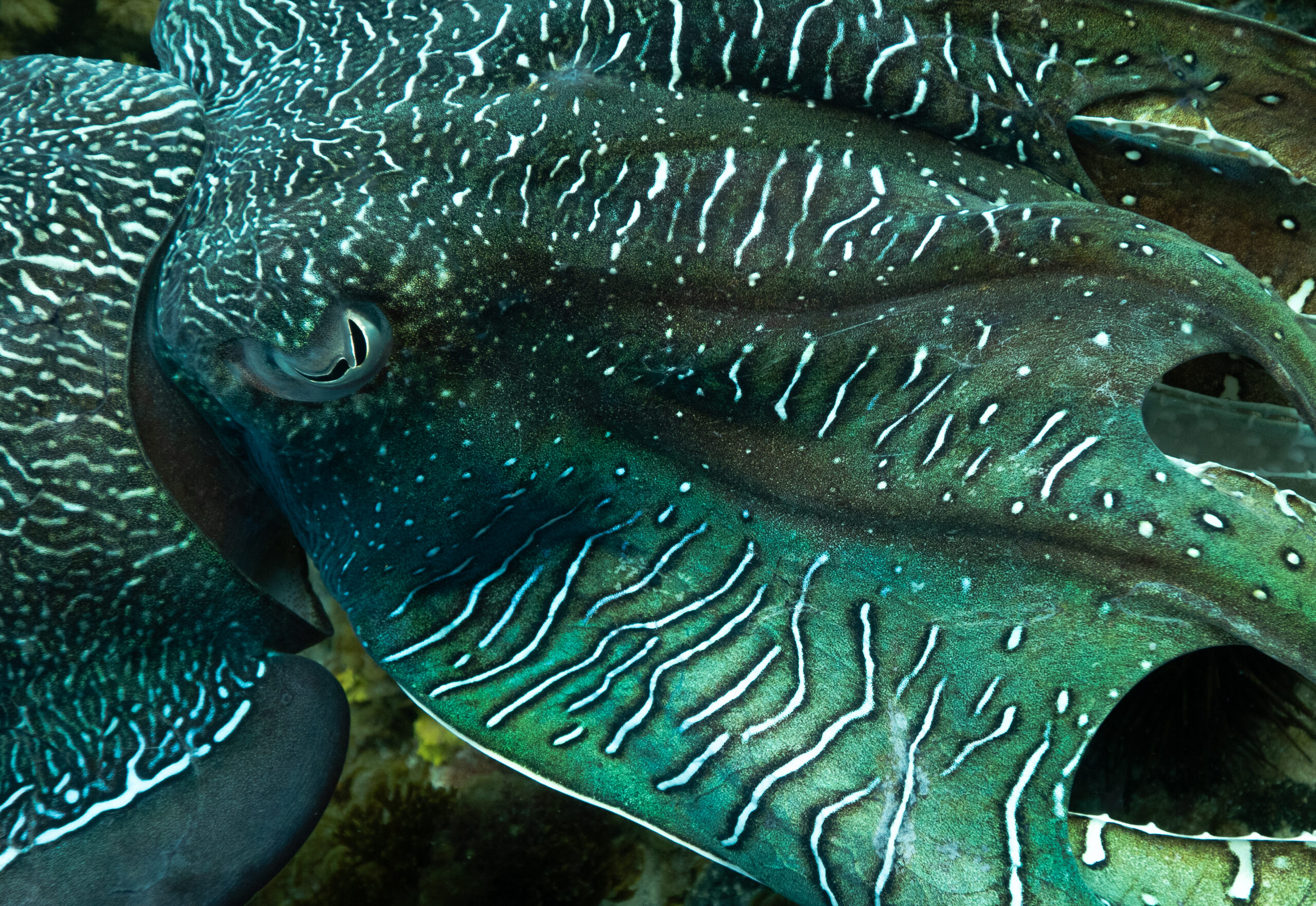


Pulsating a kaleidoscope of colours, these underwater magicians are masters of colour. Cuttlefish can completely transform to camouflage into their surroundings within seconds. Photo: Millie Mannering
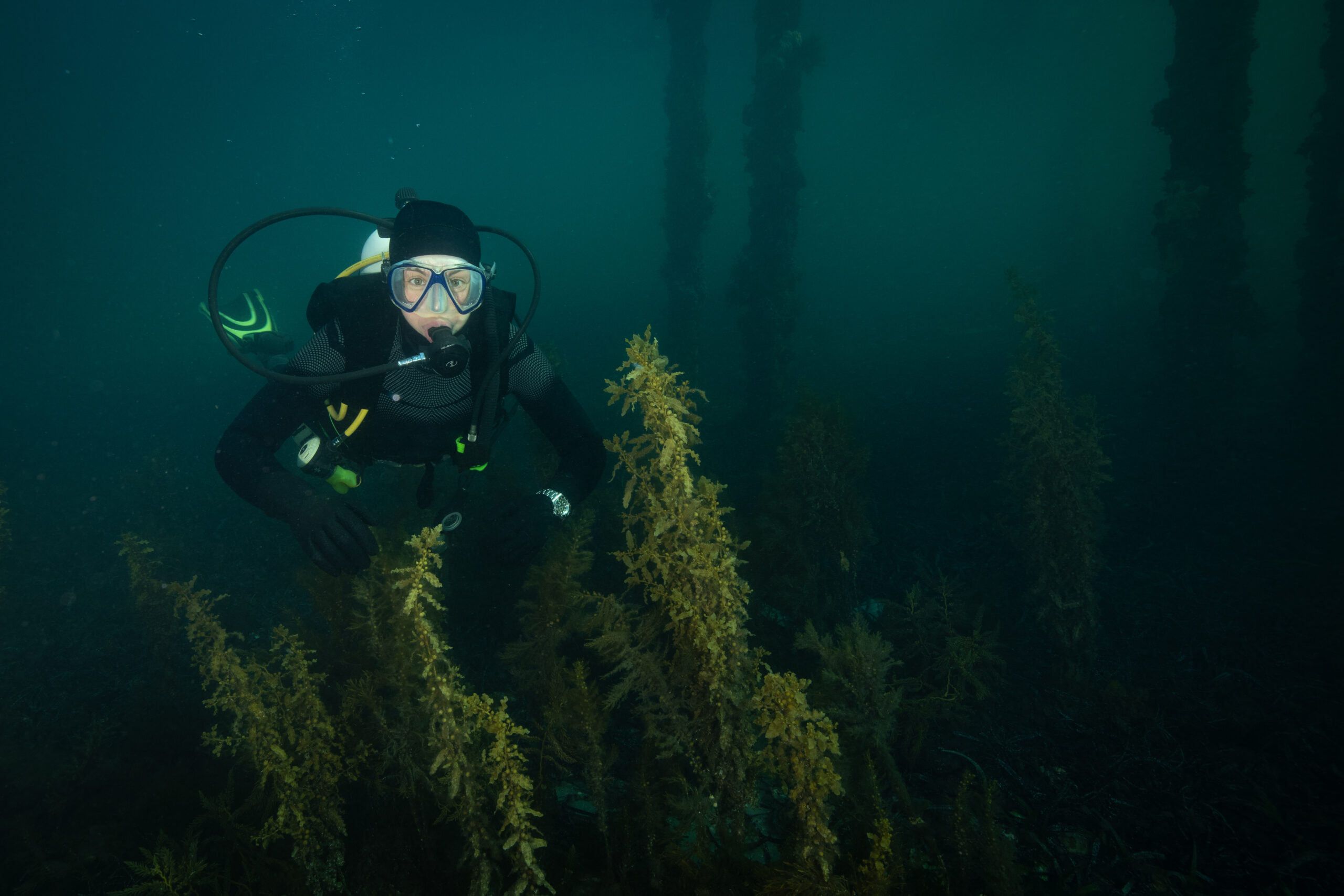
We also headed to Tumby Bay, to hunt down the elusive leafy sea dragon (Phycodurus eques). We didn’t manage to find one, but the search was thrilling and the pier pylons were covered in colourful life. Photo: Stefan Andrews

Thank you to my incredible hosts, Stefan and Hillarey, for the warm welcome to Australia and letting me scream in excitement at the kangaroos beside our dive site. It was such an awesome start to my scholarship year and very special to be shown these incredible creatures! I couldn’t have had a more experienced guide to show me around and if you want more cuttlefish tales, check out Stefan’s recent Seacreatures podcast with Matt Testoni.
Photo: Millie Mannering
Join me, above and beneath the surface, on my adventures throughout the upcoming year. Subscribe to my blogs, follow along on Instagram, Facebook or flick me an email! Next, I’m off to…
References:
1. Messenger JB (2001) Cephalopod chromatophores: neurobiology and natural history. Biological Reviews of the Cambridge Philosophical Society
2. Norman MD, Finn J, Tregenza T (1999) Female impersonation as an alternative reproductive strategy in giant cuttlefish. Proceedings of the Royal Society of London Series B: Biological Sciences1.
3. Naud M-J, Hanlon RT, Hall KC, Shaw PW, Havenhand JN (2004) Behavioural and genetic assessment of reproductive success in a spawning aggregation of the Australian giant cuttlefish, Sepia apama. Animal Behaviour